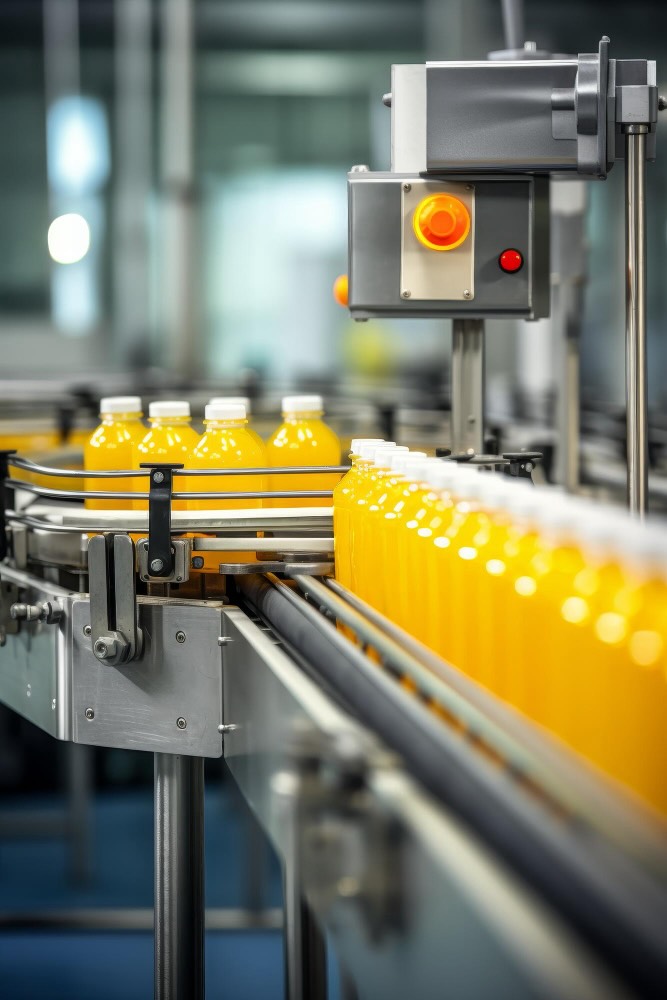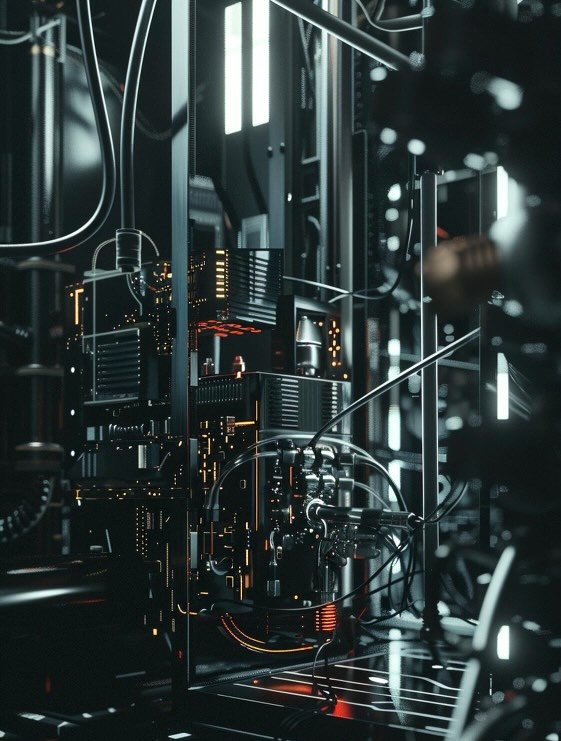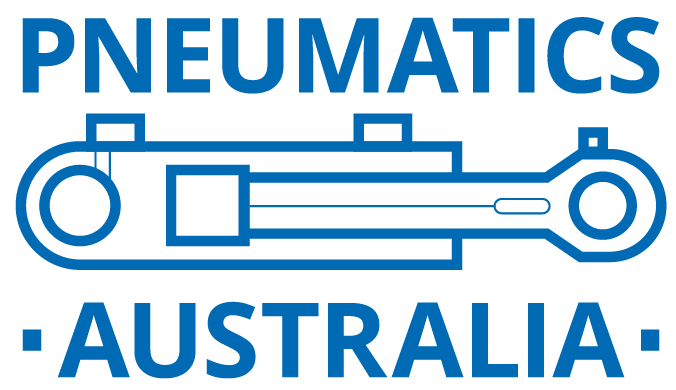Pneumatic Parts and Fittings (Brisbane)
Pneumatic parts and fittings in Brisbane play a vital role in ensuring that automation systems operate smoothly and consistently. They regulate air pressure, create tight seals, and provide precise control over automated processes across the dynamic industrial sector of the city.
As Australia’s leading pneumatics supplier, Pneumatics Australia is dedicated to providing your business with top-quality pneumatic products and expert solutions tailored to your specific needs. We are your one-stop shop for all your pneumatic requirements in Brisbane with our extensive range of pneumatic parts, valves, cylinders, and fittings.
Whether you’re looking to upgrade your existing pneumatic circuits or build a new system from scratch, we have the expertise and products to help you achieve your operational goals.
How Pneumatic Systems Work
A pneumatic system is a network of components that use compressed air to transmit power and control motion. These systems are widely used in industrial automation due to their reliability, efficiency, and versatility. The basic components of a pneumatic system include an air compressor, air tank/reservoir, air filter, pressure regulator, lubricator, valves, cylinders, and fittings.
Pneumatic parts and fittings work together to control the flow and pressure of compressed air throughout the system. The air compressor generates compressed air, which is then stored in the air tank/reservoir. The air filter removes contaminants from the air, while the pressure regulator ensures that the air pressure remains consistent and within the desired range. The lubricator adds oil to the air to lubricate moving parts and prevent wear.
Valves are used to control the direction and flow of air in the system, while cylinders convert the energy of compressed air into linear motion. Fittings, such as push-to-connect fittings, threaded fittings, and quick-disconnect couplings, connect the various components of the system and allow for easy installation and maintenance.

How Pneumatic Systems Work
A pneumatic system is a network of components that use compressed air to transmit power and control motion. These systems are widely used in industrial automation due to their reliability, efficiency, and versatility. The basic components of a pneumatic system include an air compressor, air tank/reservoir, air filter, pressure regulator, lubricator, valves, cylinders, and fittings.
Pneumatic parts and fittings work together to control the flow and pressure of compressed air throughout the system. The air compressor generates compressed air, which is then stored in the air tank/reservoir. The air filter removes contaminants from the air, while the pressure regulator ensures that the air pressure remains consistent and within the desired range. The lubricator adds oil to the air to lubricate moving parts and prevent wear.
Valves are used to control the direction and flow of air in the system, while cylinders convert the energy of compressed air into linear motion. Fittings, such as push-to-connect fittings, threaded fittings, and quick-disconnect couplings, connect the various components of the system and allow for easy installation and maintenance.


Advantages Over Other Automation Systems
Clean operation:
Compressed air is non-toxic and does not contaminate the environment.
Safety:
Compressed air poses no risk of fire or explosion.
Reliability:
Pneumatic components are durable and require minimal maintenance.
Cost-effectiveness:
Compressed air is readily available and relatively inexpensive to produce.
Simplicity:
Pneumatic systems are easy to design, install, and maintain.
Advantages Over Other Automation Systems
Clean operation:
Compressed air is non-toxic and does not contaminate the environment.
Safety:
Compressed air poses no risk of fire or explosion.
Reliability:
Pneumatic components are durable and require minimal maintenance.
Cost-effectiveness:
Compressed air is readily available and relatively inexpensive to produce.
Simplicity:
Pneumatic systems are easy to design, install, and maintain.

Pneumatic Parts Offered by Pneumatics Australia
We offer a comprehensive range of high-quality pneumatic parts to meet the diverse needs of our customers.
Air Compressors
The heart of any pneumatic system, air compressors generate the compressed air needed to power pneumatic components.
We offer a variety of compressor types, including piston, rotary screw, and scroll compressors, to suit different application requirements.
Air Tanks / Reservoirs
Air tanks or reservoirs store compressed air and help maintain a consistent supply of air to the system, even during periods of high demand and also offer an initial point to eject condensed moisture from the system.
Our tanks are built to withstand the rigours of industrial use and ensure reliable performance.
Air Filters
Air filters remove contaminants from the compressed air, protecting downstream components from damage and ensuring clean, dry air for your application.
We offer filters with various filtration levels from 40um to Activated Carbon Elements for breathing quality air to meet your specific requirements.
Pressure Regulators
Pressure regulators control the air pressure supplied to the system, allowing you to adjust the pressure to suit your application needs.
Our regulators are designed for precise and stable pressure control.
Lubricators
Lubricators introduce a controlled amount of oil into the compressed air stream, lubricating moving parts and reducing friction and wear.
We offer lubricators with adjustable oil delivery rates to optimise system performance and component life.
Gauges
Pressure gauges and flow meters allow for monitoring and control of air pressure and flow in the pneumatic system.
Our gauges are available in various ranges and configurations to provide accurate and reliable readings.
Pneumatic Parts Offered by Pneumatics Australia
We offer a comprehensive range of high-quality pneumatic parts to meet the diverse needs of our customers.
Air Compressors
The heart of any pneumatic system, air compressors generate the compressed air needed to power pneumatic components.
We offer a variety of compressor types, including piston, rotary screw, and scroll compressors, to suit different application requirements.
Air Tanks / Reservoirs
Air tanks or reservoirs store compressed air and help maintain a consistent supply of air to the system, even during periods of high demand and also offer an initial point to eject condensed moisture from the system.
Our tanks are built to withstand the rigours of industrial use and ensure reliable performance.
Air Filters
Air filters remove contaminants from the compressed air, protecting downstream components from damage and ensuring clean, dry air for your application.
We offer filters with various filtration levels from 40um to Activated Carbon Elements for breathing quality air to meet your specific requirements.
Pressure Regulators
Pressure regulators control the air pressure supplied to the system, allowing you to adjust the pressure to suit your application needs.
Our regulators are designed for precise and stable pressure control.
Lubricators
Lubricators introduce a controlled amount of oil into the compressed air stream, lubricating moving parts and reducing friction and wear.
We offer lubricators with adjustable oil delivery rates to optimise system performance and component life.
Gauges
Pressure gauges and flow meters allow for monitoring and control of air pressure and flow in the pneumatic system.
Our gauges are available in various ranges and configurations to provide accurate and reliable readings.
Pneumatic Fittings Available at Pneumatics Australia
Pneumatic fittings are essential components that connect the various parts of a pneumatic system, allowing for the efficient and secure transmission of compressed air.
We offer a wide range of high-quality fittings to suit diverse applications and system requirements.
Push-In Fittings
Push-in fittings (or push-to-connect fittings) offer quick and easy installation without the need for tools. Simply push the tube or hose into the fitting, and a secure, leak-free connection is established.
Our push-in air fittings are available in various sizes and materials to suit your application requirements.
Threaded Fittings
Threaded fittings provide a secure and reliable connection for pneumatic components. We offer a range of thread types, including BSP, NPT, and metric, in materials such as brass, stainless steel, and nylon.
Our threaded fittings are designed to withstand the demands of industrial applications.
Quick-Disconnect Couplings
Quick-disconnect couplings allow for fast and easy connection and disconnection of pneumatic lines, making them ideal for applications that require frequent changes or maintenance.
We offer a variety of coupling styles, sizes, and materials to meet your specific needs.
Manifolds
Manifolds provide a centralised distribution point for compressed air, allowing you to connect multiple valves, cylinders, and other pneumatic components in a compact and organised manner.
Our manifolds are available in various configurations and port sizes to suit your system requirements.
Tubing / Hoses
Pneumatic tubing and hoses are used to transport compressed air between components in the system.
We stock a variety of tubing and hose materials, including nylon, polyurethane, and PVC, in different sizes and pressure ratings to meet the demands of various applications.
Compression Fittings
Compression fittings provide a secure, leak-free connection for pneumatic tubing and hoses. These fittings use a ferrule to compress the tube as the nut is tightened, creating a strong and reliable seal.
Our compression fittings are available in various materials and sizes to suit different tubing specifications and application requirements.
Choosing the Right Pneumatic Parts and Fittings in Brisbane
Selecting the appropriate pneumatic parts and fittings is important for ensuring the optimal performance, reliability, and longevity of your pneumatic system. Using the wrong components can lead to inefficiencies, leaks, and even system failure, resulting in costly downtime and repairs.
When choosing pneumatic components, consider the following factors:
1. Compatibility - Ensure that the parts and fittings are compatible with your system's operating pressure, atmosphere, temperature, and media.
2. Material - Select materials that can withstand the environmental conditions and chemicals present in your application.
3. Size - Choose the correct size of fittings and tubing to ensure proper flow rates and minimise pressure drops.
4. Quality - Invest in high-quality components from reputable manufacturers to ensure reliable performance and long service life.
5. Application requirements - Consider the specific needs of your application, such as high-speed operation, precise control, or corrosion resistance.
Common mistakes to avoid when selecting pneumatic parts and fittings include:
→ Underestimating the required flow rates or pressure ratings.
→ Neglecting the compatibility of materials with the system media.
→ Choosing low-quality components to save on initial costs.
→ Failing to consider the environmental factors that may affect system performance.
→ Overlooking the importance of proper installation and maintenance practices.
At Pneumatics Australia, you can benefit from our expertise and guidance in selecting the ideal pneumatic parts and fittings for your Brisbane-based applications.
Our knowledgeable team will work closely with you to understand your unique requirements and recommend the best solutions to optimise your pneumatic system's performance and reliability.
How to Determine the Right Size and Type of Pneumatic Components?
Selecting the appropriate size and type of pneumatic components depends on several factors, including your system's operating pressure, flow rate requirements, and the specific application.
Our experienced team can help you assess your needs and recommend the ideal parts and fittings for your system.
What Materials Are Best Suited for My Application?
The best materials for your pneumatic parts and fittings depend on your application's specific requirements, such as temperature range, chemical compatibility, and environmental conditions.
Common materials include brass, stainless steel, nylon, and polyurethane. We can help you select the most suitable materials for your application, considering factors like durability, corrosion resistance, and cost-effectiveness.
What Are the Signs That a Fitting or Hose Needs Replacement?
It's important to replace fittings and hoses before they fail to avoid costly downtime and potential safety hazards. Some signs that a fitting or hose needs replacement include:
- Visible cracks, discolouration, fraying, or damage to the exterior
- Leaks or air loss at connection points
- Stiffness or loss of flexibility in hoses
- Corrosion or deterioration of materials
How to Troubleshoot Common Issues With Pneumatic Components?
If you encounter problems with your pneumatic system, such as leaks, inconsistent performance, or component failure, here are some troubleshooting tips:
- Check for loose or damaged fittings and tubing, and replace as necessary
- Ensure that the system pressure and flow rates are within the specified range
- Inspect valves and actuators for signs of wear or malfunction
- Verify that the air filter and lubricator are functioning properly
- Check for contaminants in the system, and clean or replace components as needed
If the issue persists, contact Pneumatics Australia for expert assistance in diagnosing and resolving the problem.
How to Determine the Right Size and Type of Pneumatic Components?
Selecting the appropriate size and type of pneumatic components depends on several factors, including your system’s operating pressure, flow rate requirements, and the specific application.
Our experienced team can help you assess your needs and recommend the ideal parts and fittings for your system.
What Materials Are Best Suited for My Application?
The best materials for your pneumatic parts and fittings depend on your application’s specific requirements, such as temperature range, chemical compatibility, and environmental conditions.
Common materials include brass, stainless steel, nylon, and polyurethane. We can help you select the most suitable materials for your application, considering factors like durability, corrosion resistance, and cost-effectiveness.
What Are the Signs That a Fitting or Hose Needs Replacement?
It’s important to replace fittings and hoses before they fail to avoid costly downtime and potential safety hazards. Some signs that a fitting or hose needs replacement include:
- Visible cracks, discolouration, fraying, or damage to the exterior
- Leaks or air loss at connection points
- Stiffness or loss of flexibility in hoses
- Corrosion or deterioration of materials
How to Troubleshoot Common Issues With Pneumatic Components?
If you encounter problems with your pneumatic system, such as leaks, inconsistent performance, or component failure, here are some troubleshooting tips:
- Check for loose or damaged fittings and tubing, and replace as necessary
- Ensure that the system pressure and flow rates are within the specified range
- Inspect valves and actuators for signs of wear or malfunction
- Verify that the air filter and lubricator are functioning properly
- Check for contaminants in the system, and clean or replace components as needed
If the issue persists, contact Pneumatics Australia for expert assistance in diagnosing and resolving the problem.
Contact Us for Additional Information
As industries continue to embrace automation, the role of pneumatic products in driving efficiency, precision, and productivity has never been more critical.
Pneumatics Australia is uniquely positioned to help you improve your operations, increase your profitability, and stay ahead of the competition. With our extensive range of premium components, expert support, and customised solutions, we enable your systems to operate with greater efficiency and reliability.
Contact us today to discuss your requirements and discover how our pneumatic solutions can take your business to the next level.
